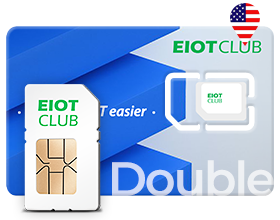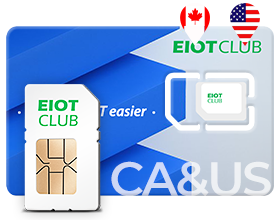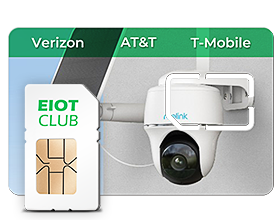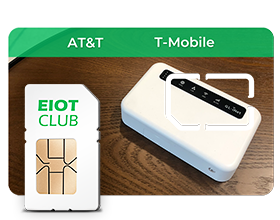Is eSIM Not Popular? Seriously?

Visit any carrier store nowadays, and you're likely to get mixed messages regarding eSIM technology. Some representatives sell it aggressively, others hardly bring it up, and shoppers usually leave wondering if it's worth making the change. The reality? eSIM isn't unpopular—it's misunderstood and patchily deployed. Though traditional SIM cards remain the focal point of everyday discussions, eSIM technology has been gaining Traction under the radar, spreading across industries from smartphones to IoT devices, revolutionizing how we approach cellular connectivity.
Is eSIM Technology Really Struggling to Gain Traction?
The quick answer is no, yet the impression lingers for valid reasons. eSIM uptake does adhere to a traditional technology adoption curve—early movers got on board years back, but the mass market is only now getting on board. In contrast to high-profile consumer tech releases with huge marketing campaigns, eSIM came in via infrastructure upgrades, device compatibility expansions, and backroom carrier negotiations. This incremental rollout established an illusion of inertia when the actual foundation was being set for mass uptake.
Leading device makers have increasingly incorporated eSIM throughout their lineups, with Apple taking the strongest step by eliminating physical SIM slots altogether on iPhone 14 models sold in the US Samsung, Google, and other Android vendors followed, although they've kept dual-SIM configurations available to facilitate the transition. The corporate world adopted eSIM even more quickly, especially for IoT use cases where physical SIM switching becomes logistically infeasible at scale.
Why Does eSIM Technology Seem "Unpopular" to Consumers?
Limited Consumer Awareness and Education
Most consumers still don't really understand what eSIM has to offer. In contrast to physical SIM cards, which offer a physical sense of control and ownership, eSIM is invisible inside device software. That invisibility ironically works against consumer trust—people believe in what they see and can touch. Carriers have not put much into eSIM education campaigns, usually presenting it as a technical feature instead of a consumer advantage.
The language itself is a barrier. "Embedded SIM" is technical jargon that sounds scary to regular people who simply want their phone to function. Marketing departments have not yet found the terminology to help eSIM sound friendly and advantageous instead of confusing and superfluous.
Historical Device Compatibility Constraints
Initial eSIM rollouts were marred by patchy device support, which presented a chicken-and-egg dilemma. Carriers were reluctant to market tech that was only compatible with high-end devices, and manufacturers had little motivation to prioritize eSIM functionality in the absence of robust carrier demand. This led to years of lukewarm launches in which eSIM was mostly available as a secondary option for enthusiasts.
Legacy devices stay in circulation much longer than industry participants expected, especially in price-conscious markets. A large number of smartphone users continue to carry phones from 2019-2021 that either do not have eSIM at all or have only partial eSIM capability. The installed base of course generates resistance to eSIM-based marketing and services.
Incompatible Carrier Support and Marketing Strategies
Carrier approaches to eSIM differ wildly, even from the same carrier in different markets. Some present eSIM as a premium feature, others as a cost-cutting move, and most just list it without comment. That inconsistency bewilders consumers who think they should have consistent experiences from one cellular provider to another.
International roaming is another sore point. Although eSIM should make worldwide connectivity easier, carrier partnerships and roaming agreements have not kept pace with the technology's promise. Travelers have tended to find physical SIM cards more dependable to use abroad, which perpetuates the view that eSIM is not yet suitable for mainstream use.
Ingrained User Habits and SIM Card Familiarity
Twenty years of physical SIM card use ingrained behaviors around device configuration and carrier switching. People get the ritual of SIM swapping—the process feels reversible and within their control. eSIM asks users to trust software processes that, to ,many will feel abstract and even permanent.
The mental comfort of being able to physically remove a SIM card when changing carriers or traveling abroad cannot be overstated. Physical SIM cards allow for physical evidence of being disconnected from a former carrier, whereas eSIM profiles can seem intangible and possibly lingering even after removal.
Perceived Technical Complexity
eSIM activation usually involves QR code scanning, downloading apps, or managing online accounts—procedures that intuitively seem more complex than the physical card insertion. Although these procedures normally take minutes, they often involve several screens and confirmations that frustrate consumers used to one-step SIM installation.
Technical support is another layer of complexity. When there are issues with eSIM, troubleshooting is done through software instead of hardware replacement. Users cannot just switch cards to isolate issues, which generates reliance on carrier technical support that many would rather not have.
What’s the Actual Deal Regarding eSIM Market Growth?
Quickly Growing Device Ecosystem Integration
eSIM uptake sped up considerably after device makers looked beyond smartphones. Smartwatches, tablets, laptops, and car systems now standardly offer eSIM functionality, providing several points of contact for consumer exposure. Apple Watch cellular variants exposed millions of consumers to the advantages of eSIM without needing to make them aware of the supporting tech.
The Internet of Things industry generates substantial eSIM volume, albeit this is mostly invisible to consumers. Connected cars, industrial sensors, and smart city infrastructure all depend heavily on eSIM technology for secure, remotely provisionable connectivity. This B2B uptake provides scale economies that translate to consumer pricing and availability.
Global Carrier Ecosystem Transformation
The major operators globally have shifted from begrudging eSIM support to aggressive promotion, at least for high-value customer segments. Verizon, AT&T, and T-Mobile all now provide eSIM as the default for new premium device activations, with physical SIM cards on request instead of by default.
International operators have adopted eSIM even more vigorously, especially in regions where device theft and SIM card fraud are a persistent issues. European and Asian operators tend to present eSIM as a security and convenience enhancement instead of merely an optional choice.
Consumer Benefits Behind Organic eSIM Adoption
Dual-SIM capability is eSIM's killer application for a large number of users. Travelers on business, international students, and individuals with personal and work lines appreciate that eSIM allows them to manage lines effortlessly without multiple devices or the hassle of repeatedly switching cards. This scenario by itself fuels substantial organic uptake by high-value customer groups.
Remote activation and carrier switching on demand offer strong convenience, especially for customers who switch plans often or travel abroad. eSIM customers can activate new service plans on demand without store visits or waiting for SIM card deliveries, enabling truly better user experiences once early setup challenges are resolved.
Despite the belief that eSIM is not popular, the EIOTCLUB Physical eSIM Card proves otherwise. Designed to bridge the gap for non-eSIM devices, this physical eSIM acts like an eSIM adapter, enabling users to download and switch between up to 9 global profiles with unlimited flexibility. It comes pre-loaded with a seed profile and supports both Android and iPhone (via reader). With wide compatibility, easy activation, and strong global reach, EIOTCLUB offers a practical solution for those curious about eSIM but unsure where to start—quietly pushing the technology into mainstream hands.
How Can Non-eSIM Devices Benefit from These Advanced Connectivity Features?
Solution 1: Physical eSIM Adapters Bridge the Compatibility Gap
Physical eSIM adapters are a creative solution for legacy devices that do not have native eSIM capability. The adapters, which are about the size of conventional SIM cards, have built-in eSIM chips that can be programmed and reprogrammed with various carrier profiles. The user inserts the physical eSIM adapter into the SIM slot on their device, then controls carrier profiles using companion applications or web portals.
This solution provides most of the advantages of eSIM—remote provisioning, multiple carrier profiles, improved security—without requiring compatibility with new device hardware. Physical eSIM adapters are especially useful for consumers who wish to have the convenience of eSIM without changing devices, or enterprises with large inventories of older devices that technically still work perfectly fine.
Solution 2: eSIM-Enabled Mobile Hotspots and Router Solutions
Mobile hotspots and routers that support eSIM provide another avenue for enjoying the benefits of eSIM without device upgrades. They can hold multiple carrier connections at once, offering backup connectivity, international roaming capabilities, and carrier flexibility to all devices connected to them, irrespective of the individual eSIM support of each device.
This solution is particularly suitable for families or small businesses where several devices require stable internet connectivity. One eSIM-capable router can offer primary and backup cellular links, switching between carriers automatically according to signal strength, data tariffs, or usage limits.
Will eSIM Technology Become the Dominant Standard?
The path to eSIM supremacy seems certain instead of doubtful. Apple's removal of physical SIM slots on US iPhone models marks the start of the end of conventional SIM cards in high-end devices.
The "unpopularity" story mainly portrays a transition period rather than essential rejection. All major connectivity transitions—from landline to mobile, 3G to 4G, 4G to 5G—went through the same perception delays where infrastructure buildup came before consumer awareness and adoption.
Current momentum indicates eSIM will achieve mainstream adoption in the next 2-3 years, powered by device replacement cycles, better carrier support, and increasing consumer awareness of real-world benefits. The alignment of manufacturer commitment, carrier investment, and real user benefits forms an adoption engine that is more powerful than near-term perception issues.
FAQ
Q1. How Challenging Is the Transition from Physical SIM to eSIM?
Switching usually happens in 10-15 minutes via your carrier's application or website. You'll scan a QR code, verify your identity, and the eSIM profile will be downloaded automatically. Most carriers provide free switches, and you can retain your current phone number and plan. The primary requirement is to have an eSIM-compatible device and to ensure that your current plan allows eSIM activation.
Q2. Can I Use Multiple eSIM Profiles Simultaneously on One Device?
Yes, most modern eSIM devices support multiple profiles, though only one or two can be active simultaneously, depending on your device. iPhones support up to 8 stored eSIM profiles with two active lines, while Android implementation varies by manufacturer. This enables seamless switching between personal and business lines or domestic and international plans without physical SIM swapping.
Q3. What If My Phone Is Stolen or Broken? What Becomes of My eSIM?
Your eSIM profile is still associated with your carrier account, not the physical device. Reach out to your carrier to disable the affected device and move your eSIM profile to a new device. This can be done in a matter of minutes and does not involve a store visit, unlike the case of physical SIM replacements.
Q4. Are There Any Disadvantages of Using eSIM over Physical SIM Cards?
So, the main downsides are that you can't just switch your SIM to another phone right away, which kinda limits flexibility. Plus, if you’re always swapping devices, it can get a bit tricky. And hey, some places around the world still don’t have great eSIM support, but that’s changing fast as more people start using it.
Q5. Are eSIM Plans More Expensive than the Normal SIM Plans?
No, eSIM and physical SIM plans are usually the same price from major carriers. Some carriers even provide exclusive eSIM promotions or streamlined plan designs that save you money. The technology itself doesn't cost more—any price differences typically represent carrier positioning decisions rather than technical expenses.
Ready to Enjoy eSIM Benefits?
The proof is here: eSIM isn't struggling to catch on—it's revolutionizing connectivity infrastructure while consumers aren't looking. Whether you're prepared to experience eSIM directly with a supporting device or you'd prefer to dip your toes in with a physical eSIM adapter, the advantages of contemporary, adaptable cellular connectivity are here now.
Don't let that perception lag hold you back from exploring superior connectivity solutions. Research eSIM options from your existing carrier, explore physical eSIM options for legacy devices, or consider purchasing eSIM-enabled mobile hotspots for instant access to that next-generation cellular agility. The future of being connected is now—and it's much more within your reach than you might suspect.



























